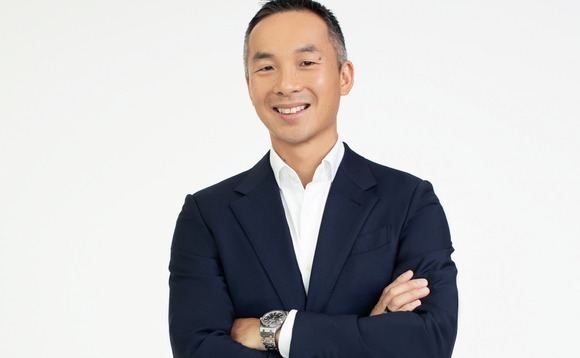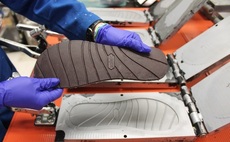
Q&A: AC Ventures' Adrian Li

Adrian Li, founder and managing partner of Indonesia-focused AC Ventures, on Chinese incursions into Southeast Asia, localisation versus scale, the prospect of a protracted downturn, and being an Ironman
Q: Much is made of how Southeast Asia is benefiting from a realignment of global supply chains. The conversation normally focuses on Western companies easing their reliance on China, but aren't Chinese manufacturers also moving?
A: For many decades, China has been the global manufacturing hub. It's not something that can change quickly. An increasing number of Chinese companies are looking to go global, but part of their competitive edge is still leveraging manufacturing bases in China. Online fashion retailer Shein is a good example. Few countries have supply chains as developed and sophisticated as those found in China. For companies like Shein, while their sales footprints are becoming more globally diversified, I'm not sure whether they would also look to diversify their manufacturing and supply chains globally.
Q: What about the impact of supply chain shifts on China?
A: We should separate the long-term structural changes from short-term phenomena. There are supply chain challenges regarding China's zero-COVID policy, but if we are moving past the pandemic, which appears to be the case, it doesn't necessarily make sense to embark on multi-year investment programmes in other countries. However, if you think labour costs in China are becoming so expensive that the market is losing its competitiveness, it might make sense to move. For lower-value products like textiles, the shift started some time ago, with capacity increasing in countries such as Vietnam, Malaysia, and Thailand. There are other drivers. For example, we've seen Apple moving chip manufacturing back to the US, which might be more expensive, but it addresses national security considerations arising from geopolitical tensions. If the issue involves a long-term change in global leadership, it makes sense for certain industries to diversify.
Q: A lot of Chinese GPs have opened offices in Singapore and are pursuing cross-border deals. What's your take on that?
A: There is a growing trend for late-stage consumer internet companies to look at global expansion, and Chinese entrepreneurs are among the most resilient and battle-tested in the world. Given the political climate in China and the saturation of the local digital market, it might be easier for these entrepreneurs to consider other geographies. China is the most advanced economy in terms of digital consumption; pretty much everything around consumer and digital has already been done. At the same time, venture-style investments in China have shifted towards hardcore technologies, and not everyone is suited to those kinds of deals, or biotech and healthcare deals. Therefore, they look elsewhere.
Q: You started out as an entrepreneur in China, then chose to invest in Southeast Asia. Why?
A: I was an entrepreneur in China between 2006 to 2012. I witnessed the remarkable impact technology entrepreneurs could make on society and recognised the value they could create for investors during that transition to digitally driven economies. The opportunity was clear, but competition was fierce. I was involved in launching an accommodation rental marketplace; we were the first in the market, but within a few months, there were more than 100 competitors building the same kind of business. And when I visited Indonesia in 2010, I realised there were few companies in the digital consumption space in Southeast Asia, whether it was e-commerce or online travel. There was maybe a once-in-a-lifetime opportunity to put to work in Indonesia all the experience, networks, and resources I had gained in China and back a new generation of entrepreneurs involved in digitalisation.
Q: You support the "time machine theory" that investors and entrepreneurs who have found success with business models in China can be replicated in Southeast Asia?
A: There might be models that don't work in China, but they work well in Indonesia. You need to be on the ground to find the right business. We have invested in two food supply chain start-ups, one focused on fisheries and the other on farms. Because supply chains in Indonesia are extremely fragmented and subscale, these businesses have a great chance of success. Wider margins can be gleaned from introducing technology and simplifying supply chains, but similar technology companies in China cannot necessarily do this because China has some of the most advanced supply chains in the world. Another area of interest is the micro, small and medium-sized enterprise (MSME) segment, which accounts for 61% of Indonesia's GDP and 97% of domestic employment. There are unique opportunities to invest in technologies that serve these MSMEs that don't exist in other parts of the world. Then there is fintech. Given 70% of the population is unbanked, regulators are very open to investments that promote financial inclusion.
Q: Is it difficult to localise in Southeast Asia but at the same time achieve scale by operating across multiple markets?
A: What we've learned over the past decade of investing in Southeast Asia is that the most compelling opportunities – at least at this point in time – are those that involve localisation. And yes, if they localise, it's harder to scale across the region. GoTo, Traveloka, Bukalapak, and Blibli are Indonesia-based and three of them are already listed. They don't even have much presence outside of Indonesia, and yet they have been able to achieve multi-billion-dollar market capitalisations. Southeast Asia as a market is not homogeneous. Therefore, especially for localisation opportunities, you probably have the best chance of success by getting to scale in the largest market first. And that's Indonesia. You might need to enter five or six other countries to achieve the same kind of scale. Even if, ultimately, you want to target the entire Southeast Asia market, you may want to start in Indonesia.
Q: Can an early-stage Indonesia strategy be executed by a team sitting in Singapore?
A: If you were sitting in Hong Kong, flying in and out of mainland China, you probably wouldn't find the best deals. It's especially important for early-stage investors to be on the ground – in the interests of sourcing and of differentiation. These days, just being able to offer capital is probably not enough to access the most attractive opportunities. You need to deal with different stakeholders, including regulators, get to know the right corporates for business development, and be in a position to source the right talent in each market. One option is to build local teams in every single market, but as a venture capital firm, this is tough. I have not seen any GP build teams in multiple markets that are strong enough to support entrepreneurs in each of those markets. We have won regional deals by coming in as the local partner for companies that started in Thailand or Malaysia and want to target Indonesia next.
Q: Most investors in Southeast Asia have never experienced a downturn. How will they survive it?
Interest rates are unlikely to ease, so the risk-off environment will remain for at least 12-18 months. It's true that investors who weren't around more than 10 years ago likely haven't experienced a protracted downturn, but Southeast Asia is not unique in this respect. Monetary policy has been very accommodating everywhere for the past decade. It's important to recognise that and be careful in your investments, so you are there to allocate capital in the right way, not only to preserve but also to augment your returns. I think that some of the best businesses get built during these difficult periods. These are also times when we see a shift in terms of who might be number one. As an investor, you must ensure you can continue to attract the best talent and invest in your team. With that and prudent decisions around investments and portfolio management, it is possible to emerge stronger from a cycle.
Q: You are known for participating in Ironman competitions. What drew you to this?
A: I did my first full Ironman in 2013 – a 4-kilometre swim, a 180 km bike ride, and a 42 km marathon. Preparation involved training up to 15 hours a week, and at the time, I didn't have kids. It was just work and training. Since then, I've focused on half-Ironmans – I've done over 15 of them. I'm also a certified triathlon coach, but my only student to date has been my wife, who completed her first half-Ironman last summer. This sport tests one's ability to be disciplined with training. It conditions the body and mind, which is useful when looking to find the right balance at work. I train every morning for about 40 minutes on weekdays: Monday is a stretching day and then there's a different workout on each subsequent day. Weekends are a lot longer, usually 3-5 hours each day.
Latest News
Asian GPs slow implementation of ESG policies - survey
Asia-based private equity firms are assigning more dedicated resources to environment, social, and governance (ESG) programmes, but policy changes have slowed in the past 12 months, in part due to concerns raised internally and by LPs, according to a...
Singapore fintech start-up LXA gets $10m seed round
New Enterprise Associates (NEA) has led a USD 10m seed round for Singapore’s LXA, a financial technology start-up launched by a former Asia senior executive at The Blackstone Group.
India's InCred announces $60m round, claims unicorn status
Indian non-bank lender InCred Financial Services said it has received INR 5bn (USD 60m) at a valuation of at least USD 1bn from unnamed investors including “a global private equity fund.”
Insight leads $50m round for Australia's Roller
Insight Partners has led a USD 50m round for Australia’s Roller, a venue management software provider specializing in family fun parks.







